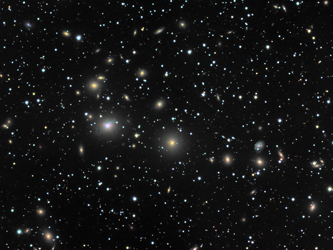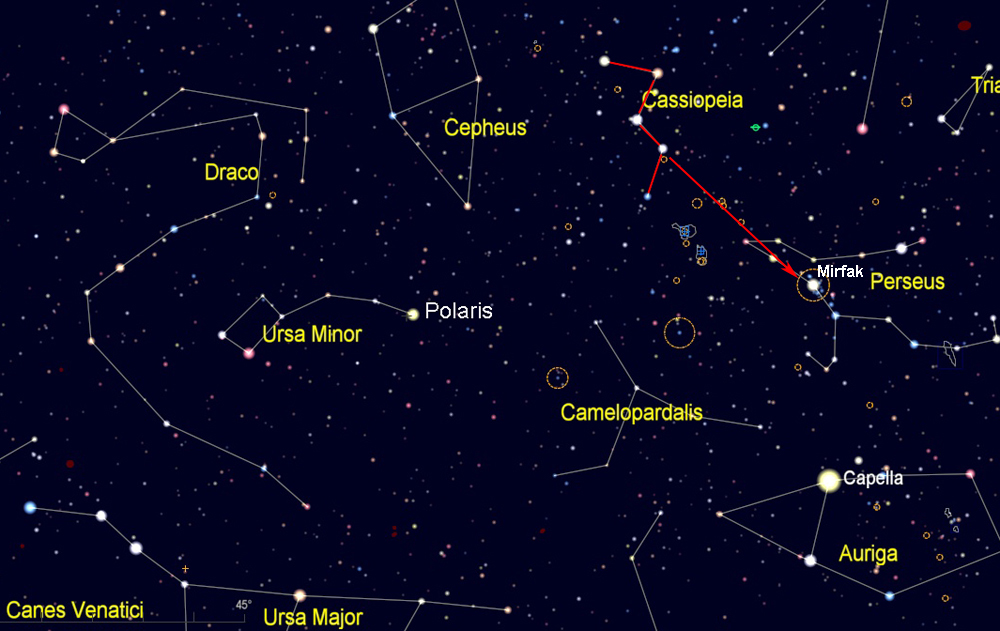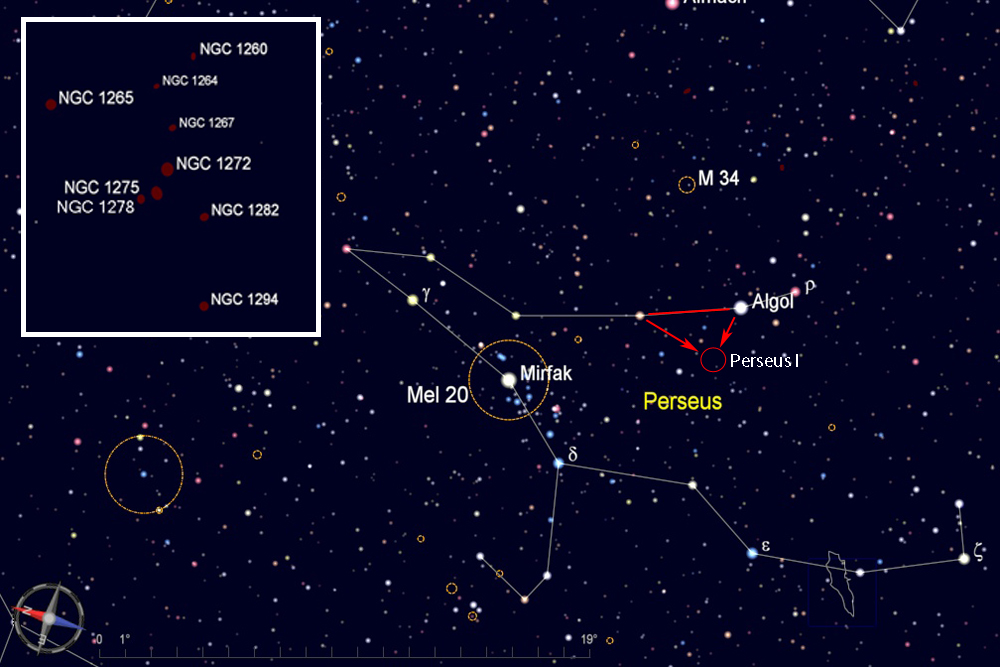
Find the constellation Cassiopeia, which has a distinctive "W" shape (although its orientation changes at different times of year as it circles the north celestial pole). On fall evenings, look for Cassiopeia in the northeast, where its tilt makes it look like a "3", and in the winter look high in the north above Polaris, where it is oriented like an "M".
As shown below, use the stars of Cassiopeia to direct you to the nearby constellation Perseus, and its brightest star, Mirfak.

The stars of Perseus are fairly bright. The shape I see is some sort of animal with a curved tail. Whatever shape you see, look for the bright star Algol and the somewhat dimmer star to its north. As shown below, visualize a right triangle with these two stars, and the third point is near the center of the Perseus I cluster. Look with a low power eyepiece to try to spot a galaxy or two, then use higher power to search for dimmer galaxies. The inset shows some of the galaxies near the center of this sprawling galaxy cluster.
